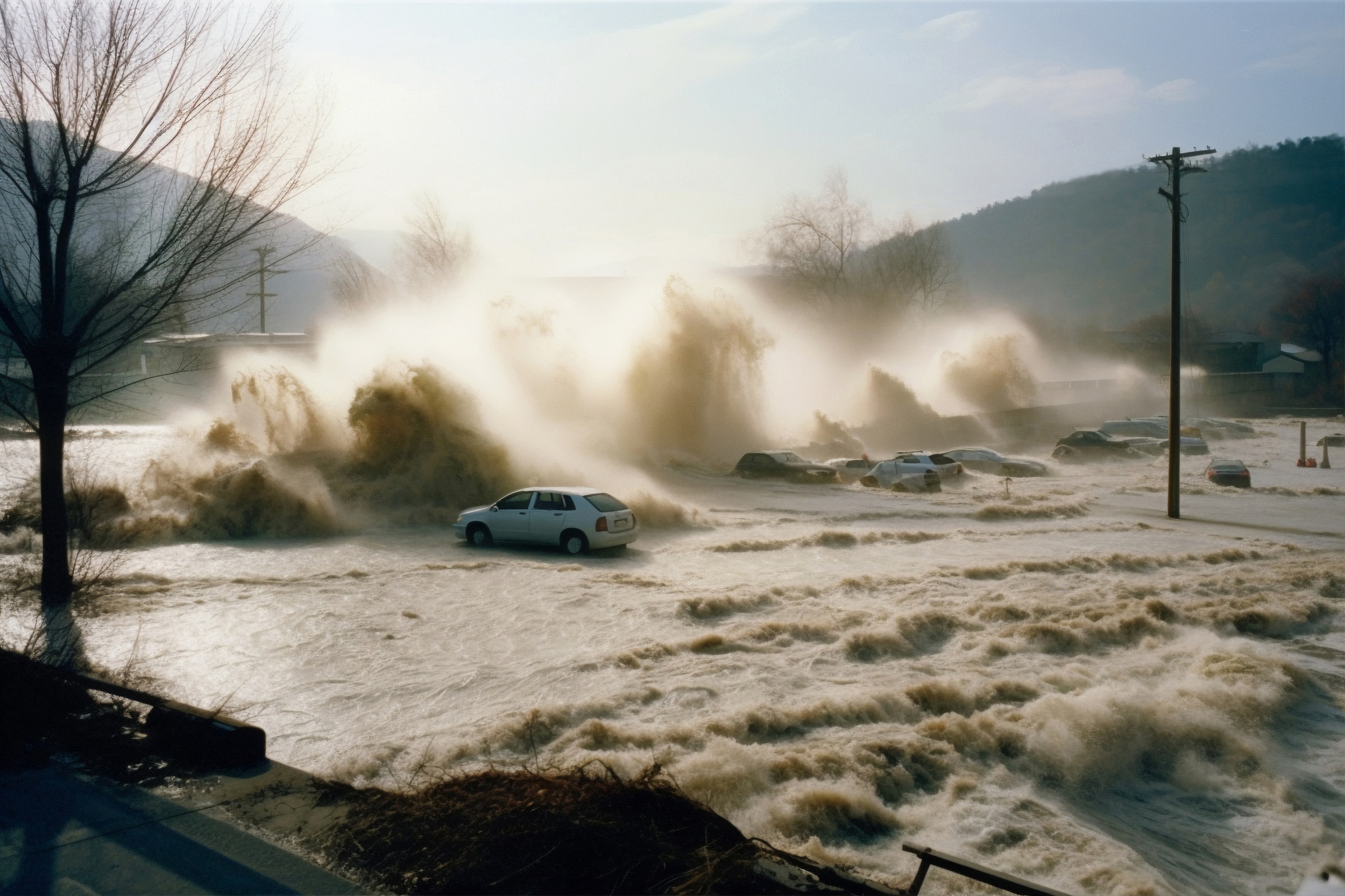How to Stay Safe During Lismore Floods
Floods are a familiar threat in Lismore, but with the right preparation, you can face them with confidence. Staying safe during these events starts with knowing what to expect and how to respond. This guide will walk you through the key steps to protect yourself and your home when Lismore floods hits.
What Are the Main Causes of Lismore Floods?
A mix of geological, climatic, and environmental factors lead to Lismore's regular and severe flooding. Located where the Wilsons River and Leycester Creek meet, the city sits on a low-lying floodplain. Heavy rain causes fast water levels to increase in this area.
The terrain of the surrounding area greatly enhances this susceptibility. Rising hills surround Lismore and direct significant runoff into the river system via steep creeks during severe rain. Rapid inflow can flood the rivers by overloading them.
Climate patterns are also key causes. Weather systems like ex-Cyclone Alfred provided extended and powerful downpours, making the area susceptible to cyclonic activity and heavy rain. Historically, such occurrences have led to major floods, as shown in the 1954 and 1974 catastrophes. The ex-Tropical Cyclone Alfred in March, 2025 also showed Lismore’s susceptibility to extreme weather occurrences too.
Lismore's growth on a floodplain, historically selected for its flat terrain and river access, has also increased flood threats. Urban development has changed natural water flow patterns. Despite efforts to reduce them, such as levees, the city is still vulnerable to flooding.
Where to Find Lismore Flood Warning?
Being aware of Lismore flood warnings is essential for personal and property protection. Several credible sources provide timely notifications and information on Lismore flooding.
Lismore City Council’s SMS Alert System: Register your phone number for SMS warnings when minor flood levels are forecast. Residents are notified every 6-8 hours during floods.
NSW State Emergency Service (SES): NSW SES updated its website and social media outlets with flood information and help.
Lismore Disaster Dashboard:An online platform that aggregates local council fire, flood, road traffic, and other emergency warnings. Maps and real-time updates keep residents informed.
Bureau of Meteorology (BoM): The Bureau of Meteorology (BoM) anticipates and warns about floods in Lismore. Their website has detailed river height and weather updates. It also shows the Lismore flood map to inform you of places susceptible to flooding.
Lismore’s Major Flood Events in the History
The community of Lismore has been profoundly affected by several terrible floods. These significant flood catastrophes have influenced the way the area handles flood risk and prepares for future crises.
The 1954 flood was one of Lismore's earliest documented significant floods. Widespread devastation resulted from heavy cyclone system rain, raising the Wilsons River to exceptional heights. Many people had to leave their homes and businesses under water with little notice.
Former Tropical Cyclone Zoe set off a massive flood in 1974. The cyclone caused unending rain throughout the Northern Rivers. At one of its highest historical levels, the Wilsons River surpassed 12 metres. The harm to local livelihoods and infrastructure was significant and long-lasting.
Lismore recorded the worst flood in 2022. Devastating the whole town, the Wilsons River reached 14.4 metres on February 28. Homes were swept away, individuals were saved from rooftops, and areas of the neighbourhood were rendered uninhabable. The extent of the devastation drew national notice and demands for significant improvements in urban planning and flood control.


What Is Lismore Flood Risk Management Plan?
The Lismore Flood Risk Management Plan was created to mitigate local flood concerns. Flooding should be minimised for the community and economy through the plan.
Key components of the plan include:
Controlling and redirecting flooding using infrastructure initiatives like levees and drainage enhancements.
Controlling growth in flood-prone locations helps guarantee new buildings fit flood risk, reducing possible damage.
Safeguarding people during flood occurrences by improving early warning systems, evacuation plans, and other planning and response techniques.
Flood risk awareness and preparedness projects should be taught and participated in by the community to build resilience.
How Do Lismore Residents Cope with Repeated Flooding?
Enduring the regular floods in Lismore calls for preparation for service disruption. Apart from the first safety measures, residents are expected to prepare for power outages. Power failures can increase suffering. It is crucial to have consistent backup plans ready to preserve comfort and security.
Portable power stations provide a quick and easy answer for short-term power requirements. Notable among them is the EcoFlow DELTA Pro Portable Power Station, which has a large 3,600Wh capacity and can grow to 21,600Wh. Its 3,600W AC output can run nearly every household item, guaranteeing that vital equipment stays functional during power failures. It is also one of the portable home battery backup solutions when you need it for a different apartment or studio.


Equally important is keeping up to check power outages throughout flood situations. Local utility companies’ internet sites and mobile apps let residents track real-time updates. Tuning into local radio stations and signing up for emergency alert services also helps one to get quick information on safety advisories and power restoration initiatives. Lismore households can better negotiate the difficulties brought on by ongoing floods by combining dependable power backup systems with careful information monitoring.
Staying connected during floods is just as critical as staying powered. In Lismore, where infrastructure can be quickly impacted, residents rely on local radio broadcasts, emergency text alerts, and real-time updates from utility websites and apps. These channels help people respond quickly to changing conditions, whether it’s rising river levels or evacuation orders.
Just as important as power and communication is having a well-prepared emergency kit. In a flood-prone town like Lismore, it’s not something you throw together at the last minute—it’s something you build thoughtfully. The essentials are simple but life-saving: non-perishable food, clean water, basic first aid, flashlights, extra batteries, and necessary medications. But the real difference comes in the details—phone chargers, a battery-powered radio, hygiene supplies, and copies of key documents tucked into waterproof sleeves.
Conclusion
From understanding the causes to staying informed through trusted alerts, preparation is the key to safety. Residents who plan ahead—by securing home backup power supply, monitoring flood warnings, and building thoughtful emergency kits—stand a far better chance of protecting their homes and families. With each major flood, the lessons grow stronger: adapt, stay connected, and be ready. Surviving Lismore floods isn’t luck—it’s preparation, awareness, and community strength.
FAQs
Why is Lismore so prone to flooding?
Lismore sits on a low-lying floodplain where the Wilsons River meets Leycester Creek. Surrounded by high hills, the region gathers significant amounts of water during heavy rain. This natural topography, mixed with severe rain and climate events, produces high flood danger. Urban growth in flood-prone areas also adds to the city's continuous susceptibility.
When was Lismore last flooded?
The last significant flood in Lismore was in February 2022, when the Wilsons River hit a record height of 14.4 meters. The calamity displaced hundreds and destroyed homes and businesses, hence causing unmatched devastation. Many areas of the city remained unreachable. The disaster has spurred broad debates about future flood control and urban design and recovery has been delayed.